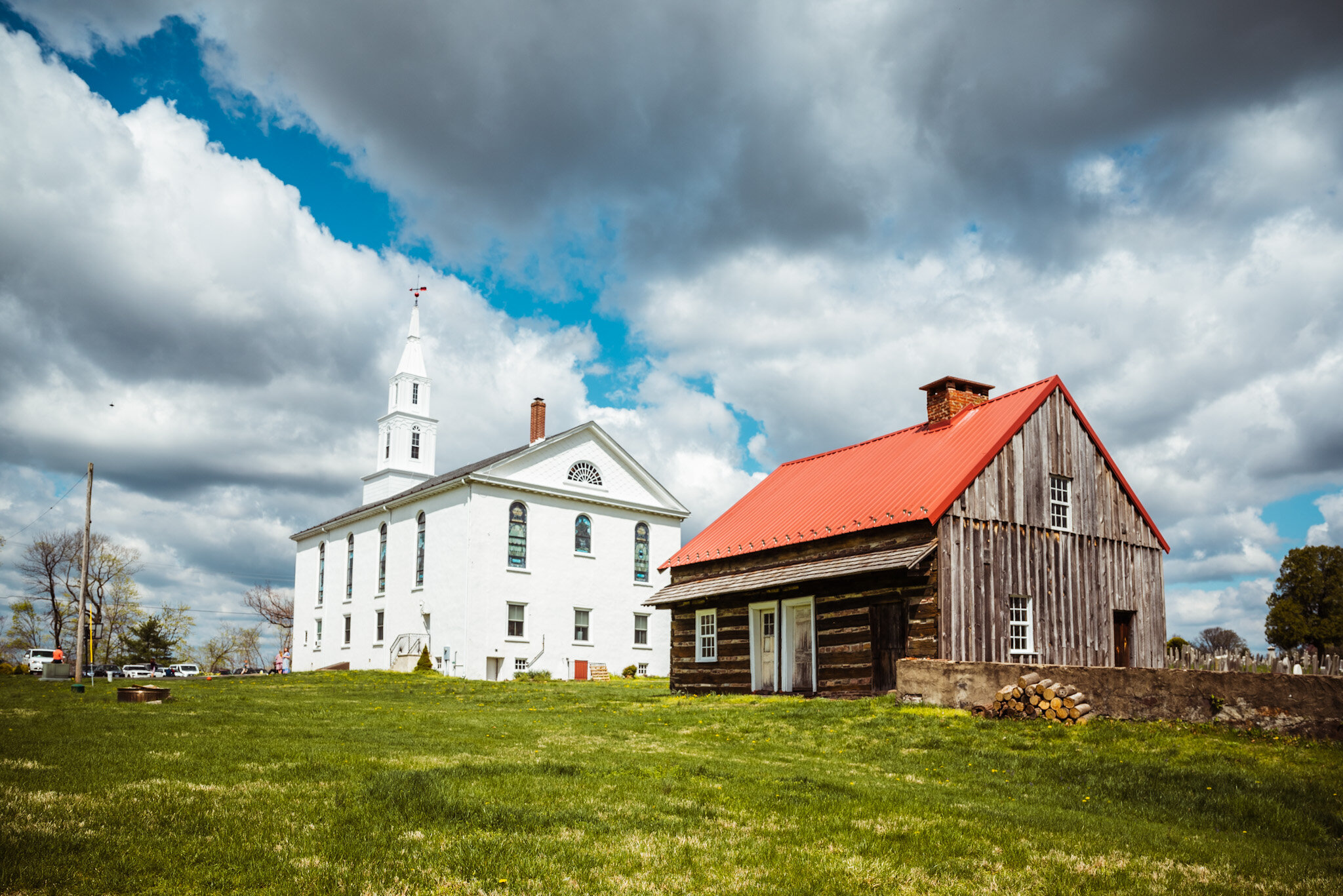
History of The Gemeinhaus
Creation of the Gemeinhaus
On November 12, 1730, Old Goshenhoppen Church was found as a “Union Church” consisting of two congregations, one Lutheran and the other Reformed. In early 1732, Michael Reiher of the Lutheran congregation, and Jacob Keller of the Reformed, traveled to Philadelphia to jointly purchase a tract of land, in what is known today as the Woxall area of Upper Salford Township, for the purpose of constructing a temporary Gemeinhaus. By the fall of that same year, a log building was constructed on the recently purchased land.
The Gemeinhaus Through the Years
By 1744, the two congregations began to grow, and they soon undertook the development of a larger stone structure that would be the footprint of a later version built in 1858. The 1858 structure was annexed and remodeled in 1915 to its current appearance.
The 1732 log Gemeinhaus was then used as a schoolhouse for the local children and housing for the schoolteacher, who also served as the organist until the current parish house (parsonage) was built in 1846 as a residence for the schoolteacher, later the sexton, and finally the pastor. As time passed, the old log Gemeinhaus was no longer used as a school and, in the early 1900’s, became the meeting place for the Ladies Aid Society, and eventually fell into use as a storage building.
What’s in the name?
Gemeinhaus or Gemeindehaus (proper spelling in German) = Meetinghouse. A Gemeinhaus usually included a large room (the Stube) for gathering, worship, and/or school purposes, and an area for administrative use by the Teacher or Minister to receive visitors. The second floor would have been utilized as a living quarters for the Teacher.
Where Does the Name Goshenhoppen Come From?
The Name Goshenhoppen may have derived from the local Lenape Indians who inhabited the area and whose tribal chief was named “Shak-a-hop-pa,” which the Germans, who began to settle in the area, pronounced as “Guscha-huppa.” As time passed, the German pronunciation of “Guscha-huppa” became Goschenhoppen, and later, the letter “c” was omitted for reasons unknown, from the spelling to create the name “Goshenhoppen” that is used today. A second theory claims that the name derived from the biblical “Goshen,” however, its true origins have been lost.



